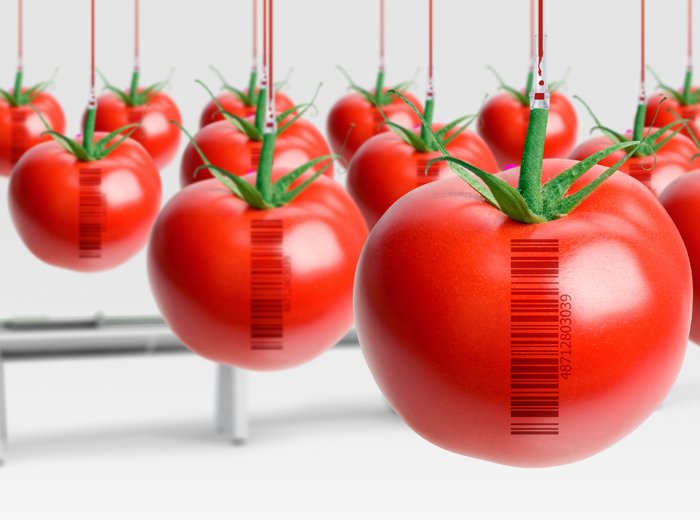Traceability for Transparency in Food Supply Chain in Thailand
1199 Views |

Translated and Compiled By: กันต์ธร หลีนวรัตน์
Kunthorn Leenavarat
Assistant Editor
Food Focus Thailand Magazine
editor@foodfocusthailand.com
สถานการณ์การแพร่ระบาดของโควิด-19 ไม่เพียงแต่ส่งผลให้เกิดมาตรการหรือวิถีชีวิตในรูปแบบใหม่ขึ้น แต่ยังเป็นการกระตุ้นให้เหตุการณ์ที่เคยคาดการณ์ว่าจะเกิดขึ้นในอนาคตให้เกิดเร็วขึ้นอีกด้วย โดยเฉพาะเมื่อเป็นเรื่องของความปลอดภัยหรือสุขอนามัยในชีวิตประจำวัน กระบวนการการตรวจสอบย้อนกลับที่หลายคนอาจจะเคยได้ยินหรือรู้จัก ซึ่งเคยคาดการณ์ไว้ว่าจะค่อยๆ มีบทบาทในอุตสาหกรรมอาหาร ก็กลับถูกเร่งให้นำมาประยุกต์ใช้เพื่อให้เห็นภาพของซัพพลายเชนทั้งหมด ว่าตรงจุดไหนที่มีความเสี่ยงต่อการปนเปื้อนเชื้อโควิด-19 ด้วยเหตุนี้เอง ประเทศไทยจึงต้องเร่งปรับตัว โดยการนำการตรวจสอบย้อนกลับมาใช้ให้เร็วขึ้นเพื่อรองรับระบบที่ต้องทวนสอบได้
Food Traceability คือความสามารถในการตรวจสอบย้อนกลับของกระบวนการผลิตสินค้าอาหาร รวมทั้งวัตถุดิบต่างๆ ที่ใช้ในผลิตภัณฑ์อาหารทุกขั้นตอน ตลอดทั้งห่วงโซ่อุปทานทั้งไปและย้อนกลับ การตรวจสอบนี้รวมถึงการบันทึกข้อมูลทุกขั้นตอนที่เกี่ยวข้องในการผลิต การแปรรูป ไปจนถึงการกระจายสินค้าอาหารและวัตถุดิบ ในกรณีที่มีการแพร่กระจายของโรคที่เกิดจากอาหาร หรือเกิดการปนเปื้อน การตรวจสอบแบบย้อนกลับนี้เอง จะช่วยให้ผู้ที่เกี่ยวข้องรวมทั้งผู้ผลิตสามารถค้นหาสาเหตุของปัญหาได้อย่างทันท่วงที และทำการกำจัดหรือเรียกคืนสินค้านั้นก่อนที่จะแพร่กระจายเป็นวงกว้าง
มาตรฐาน ISO (International Organization for Standardization) ได้นิยามการตรวจสอบย้อนกลับไว้ว่า เป็นการตรวจสอบประวัติที่มา การนำมาใช้ และตำแหน่งหรือสถานที่ ซึ่งหากหมายถึงผลิตภัณฑ์ จะต้องมีข้อมูล แหล่งเพาะปลูก หรือแหล่งผลิตของวัตถุดิบ ขั้นตอนการผลิต การจัดส่งหรือการกระจายสินค้า รวมทั้งสถานที่จำหน่ายด้วย
ตัวอย่างในการทำ Food Traceability ในแต่ละจุดของซัพพลายเชน
ขั้นตอนการเพาะปลูก ตัวอย่างข้อมูลที่ต้องบันทึกไว้ เช่น สายพันธุ์ของพืช รวมถึงปริมาณการใช้สารเคมีและยาฆ่าแมลงต่างๆ เป็นต้น
ขั้นตอนเก็บเกี่ยว ตัวอย่างข้อมูลที่ต้องบันทึกไว้ เช่น วันที่เก็บเกี่ยว อุณหภูมิการเก็บรักษา ความชื้น ปริมาณคาร์บอนไดออกไซด์ ล็อตการเก็บเกี่ยว เป็นต้น
ขั้นตอนกระบวนการผลิตในโรงงาน ตัวอย่างข้อมูลที่ต้องบันทึกไว้ เช่น วันและเวลาที่นำวัตถุดิบเข้ากระบวนการผลิต วัตถุดิบที่นำออก ที่มาของวัตถุดิบ ตำแหน่งโรงงานที่ผลิต วัสดุบรรจุภัณฑ์ที่ใช้ เป็นต้น
ขั้นตอนในส่วนของผู้ขาย ตัวอย่างข้อมูลที่ต้องบันทึกไว้ เช่น วันและเวลาในการ รับสินค้า ขายสินค้า ล็อต/สต๊อกของสินค้าในการจัดเก็บ
จะเห็นได้ว่า ในแต่ละขั้นตอนจะมีการบันทึกข้อมูลที่อาจส่งผลกระทบต่อคุณภาพของสินค้า เพื่อจะได้ทราบถึงที่มาที่ไปได้อย่างเจาะจง ในกรณีที่ต้องมีการตรวจสอบย้อนกลับ ทั้งนี้เพื่อให้สามารถตรวจสอบขั้นตอนการผลิตสินค้าตั้งแต่เริ่มต้นจนถึงปลายทางได้อย่างแม่นยำ เพื่อให้ผู้บริโภคมั่นใจได้ว่าสินค้ามีมาตรฐานและความปลอดภัย การบันทึกข้อมูลในซัพพลายเชนนี้ สามารถทำได้ในรูปแบบเอกสารหรือระบบอิเล็กทรอนิกส์ อีกทั้งในปัจจุบันมีเทคโนโลยีมากมายที่ช่วยรองรับการทำงานให้ราบรื่น และบันทึกข้อมูลเหล่านี้อย่างอัตโนมัติ
The Covid-19 pandemic not only changed the ways we live or built up new normal, but it also stimulated the predicted future to transpire earlier, especially related to people's safety or hygiene. Like food production, Food Traceability was known and anticipated to be a slow transition. It has been urged to apply and adapt right away for a visible food supply chain to detect where it is at risk of contaminating with Covid-19. As a result, Thailand must take food traceability in actions to the process for getting familiar with this system.
Food Traceability is the ability to trace the movement of food products and raw materials used in food products at all stages throughout the supply chain back and forth. Food Traceability includes records related to the production, processing, distribution procedures of food products and ingredients. In the event of a spread of foodborne illness or a contamination situation, product traceability will enable government agencies and those who produce and sell food to locate the source of the product promptly and dispose of the product in the marketplace before it spreads or expands in the broader area, reducing incidences of foodborne illnesses.
According to ISO (International Organization for Standardization), traceability is defined as the ability to trace the history, application, or location of that which is under consideration. When it refers to a product, it relates to the origin of ingredients, processing history, distribution, and location of the product.
Example of Food Traceability in Food Supply Chain
Cultivation - the data collected for tracking includes plant species or chemicals, drugs used, etc.
Harvesting - the data collected for tracking includes harvest date, moisture content, CO2 content or harvesting batch, etc.
Production - the data collected for tracking includes input/output date & time of the materials or ingredients, the origin of the raw material, OEM plant location, material of packaging, etc.
Retailer - the data collected for tracking includes product stocking/selling date and time, lot or stock number of the product
In each step throughout the supply chain, the data that may affect the quality of the product must be recorded so that we know the specific information in case of traceability. This ensures that the production from the beginning throughout the end can be accurately inspected, and the consumer can be assured that the product has standards and safety. Today, you will find that many technologies support the smooth operation and save these data as an archive, which helps in this job done perfectly.



